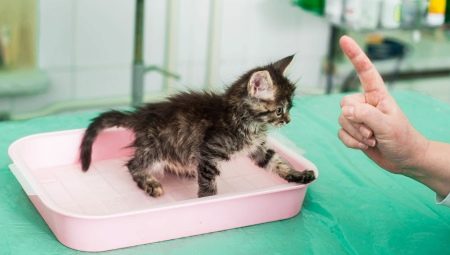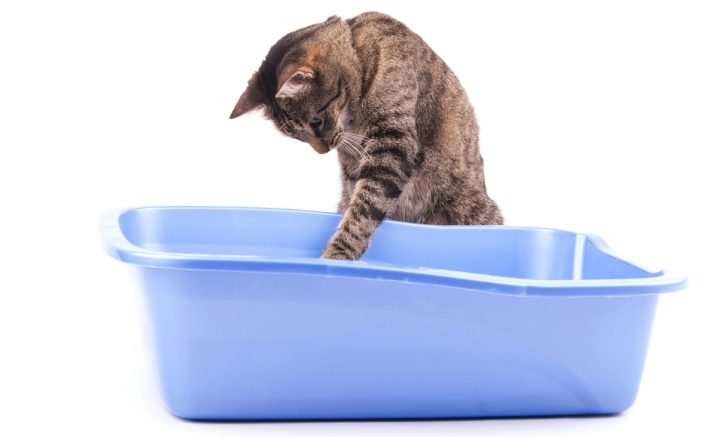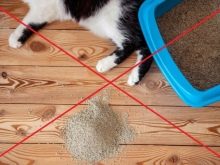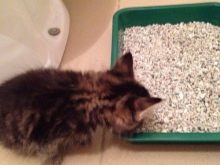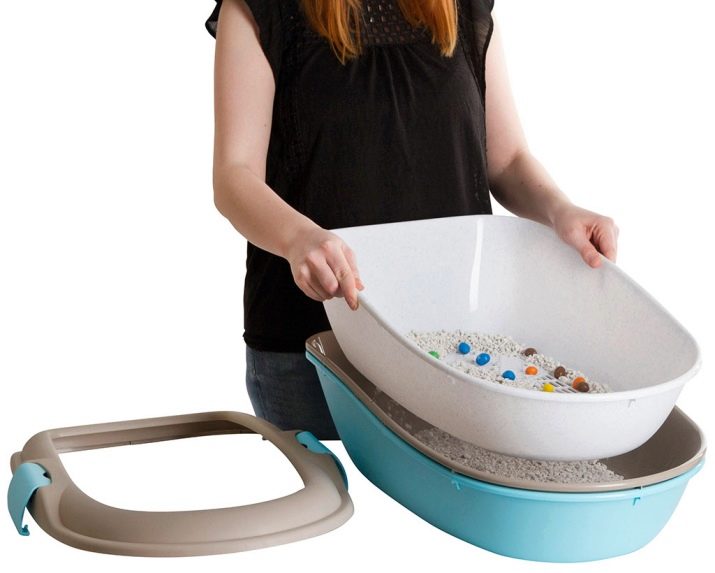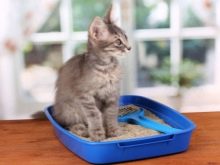From the very first days of the appearance of a kitten in the house, it is required to begin to accustom him to the tray. The smaller the age of a pet, the easier it is to accustom him to the toilet. However, the difficulty arises if the owners do not want to use the filler. Perhaps they prefer to put the granules under the grate, or even do without them - to lay down a newspaper, fill in water, fill up soda. In any case, to teach a kitten to a pot without a filler is more difficult.
Pros and cons of the tray without filler
Each owner of a cat and a cat chooses whether it is worth using a special cat litter for the toilet. In each case, there are advantages and disadvantages. The advantages of using an empty pot are as follows.
- The hostess does not have to collect the pellets scattered by the cat all over the house every day. In addition, many varieties can stick to the pet's feet and spread around the apartment.
- Some cats generally do not recognize the filler, it is more convenient for them to visit the empty tray. Although in general it is still a rarity.
- Many animals can not resist the temptation to try the granules to taste, and most of the fillers adversely affect the health of the pet when it enters the stomach. Especially love to eat a kitten filler.
- In many cases the use of filler is unhygienic. Some species (for example, crumpling) strongly gather dust and leave marks on the animal's fur.
- The use of filler is not recommended in the apartment where small children live, as the young owners often are not averse to playing with pebbles.
- One more plus of refusal from a filler - economy of means. Some species are quite expensive.
At the same time, the use of filler has significant advantages.
- Most cats still love to dig in granules, hiding behind them waste products.
- When using a filler in the house the smell is much less felt.
- The use of some granules does not require instant cleaning of liquid waste.
- Cleaning the tray after the filler is easier; it can be done more thoroughly.
How to teach?
At a responsible and patient owner, the kitten will start walking into the tray without a miss by as early as 2 months. It is possible to teach a baby to a tray without a filler, observing the following steps.
- First, it is important to teach a kitten to use a filled pot. Pour some pellets into the tray and set the kitten on top. Do not force him to go to the toilet, do not sit down, just watch. During the day, put it in a container several times. If a fluffy child went to the toilet to another place, then transfer the waste products to the tray for a while. Liquid waste can be soaked in a passage of the newspaper and put in a pot. After some time, the kitten will understand why you need a tray.
- Do not remove the filler immediately, as the pet learns to go to the toilet at the right place. Leave the pellets for 3-4 weeks, do not forget to regularly clean the pot, teaching the kitten to clean.
- After this time, you can try to teach your pet to the toilet in an empty tray. Now the baby knows where he should perform his intimate procedures, examined the container, even a carefully cleaned tray retains the appropriate smell, and the kitten will quickly become comfortable when it is in the empty tray.
- If the kitten does not immediately figure out what to do with an empty tray, you can try to free the pot from the pellets gradually, reducing the amount of filler every week, thereby weaning it off from the use of absorbent lumps. When at the end of the period of weaning only a handful of pebbles remain in the tank, of course, the kitten will not like it, but over time he will get used.
This method will not allow the baby to fall into shock when he sees an empty tray.
Recommendations of specialists
So that the kitten gets used to the new regime more quickly, listen to the advice of veterinarians to teach young animals to the pot.
- Put the tray in a quiet place where there are not many people, and no one will disturb the baby.
- Choose a tray with a wide area and low sides. Kittens will be more comfortable to get used to such a capacity.
- All liquid waste trapped under the grate, pour immediately. Immediate cleaning is also required for solid waste products.
- Rinse the tray after each use with a kitten.
What to use instead of filler?
Instead of filler under the grate can pour sand or sawdust. Another option is to use plain water. Pour a little liquid on the bottom, you can pour a little bit of soda (it absorbs the smell), and put a grate on top. This option is suitable for such trays, in which the grille is located quite high.
You can just put a newspaper, however, it will have to change after each urination of a pet. That is, this method is suitable for those owners who have the opportunity to always be at home.
Use the above soda in the case of sand or sawdust. Pour the powder on the bottom, and sprinkle the granules on top. This way will allow to keep longer the pleasant atmosphere in the house. Some owners do not add anything to the tray at all - they leave it empty and put a grate on top. However, in this case, an unpleasant smell can spread around the apartment, if the pot is not rinsed in time.
Tips from a veterinarian to train a kitten to the tray can be found in the video below.
